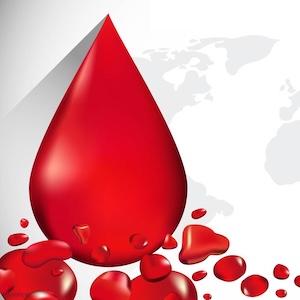Original Articles
Vol. 2 No. 1 (2023)
Plasma fibrinogen levels and all-cause and cause-specific mortality in an Italian adult population: results from the Moli-sani study

Publisher's note
All claims expressed in this article are solely those of the authors and do not necessarily represent those of their affiliated organizations, or those of the publisher, the editors and the reviewers. Any product that may be evaluated in this article or claim that may be made by its manufacturer is not guaranteed or endorsed by the publisher.
All claims expressed in this article are solely those of the authors and do not necessarily represent those of their affiliated organizations, or those of the publisher, the editors and the reviewers. Any product that may be evaluated in this article or claim that may be made by its manufacturer is not guaranteed or endorsed by the publisher.
Received: 21 June 2022
Accepted: 16 December 2022
Accepted: 16 December 2022
1937
Views
621
Downloads
Similar Articles
- Roger Lijnen, Désiré Collen, The key to fibrinolysis and thrombolysis , Bleeding, Thrombosis and Vascular Biology: Vol. 4 No. 3 (2025)
- Alice Lipari, Esmeralda Capristo, Antonietta Ferretti, Erica De Candia, Anticoagulation in obese patients: challenges and strategies , Bleeding, Thrombosis and Vascular Biology: Vol. 4 No. 3 (2025)
- Ciarán Kennedy, Luke J. Conroy, Braden Millar, Monica de Gaetano, The subtle red line between combating and resolving inflammation in the cardiovascular disease, a “silent sniper” , Bleeding, Thrombosis and Vascular Biology: Vol. 4 No. 2 (2025)
- PO11 | Neutrophil cathepsin G and risk of cardiovascular events in patients with diabetes mellitus , Bleeding, Thrombosis and Vascular Biology: Vol. 4 No. s1 (2025)
- CS01 | Elucidating the evil relationship of metabolic dysfunction–associated fatty liver disease with cardiovascular comorbidities: the complex interplay among hypercoagulability, inflammation and liver fibrosis , Bleeding, Thrombosis and Vascular Biology: Vol. 4 No. s1 (2025)
- Licia Iacoviello, Maria Benedetta Donati, Unveiling the “common soil” of cardiovascular disease and cancer , Bleeding, Thrombosis and Vascular Biology: Vol. 4 No. 1 (2025)
- PO91 | Disseminated intravascular coagulation with deep vein thrombosis in a frail patient: an extreme manifestation triggered by sepsis during SGLT2i therapy , Bleeding, Thrombosis and Vascular Biology: Vol. 4 No. s1 (2025)
- Benedetta Izzi, Simona Costanzo, Alessandro Gialluisi, Amalia De Curtis, Sara Magnacca, Teresa Panzera, Augusto Di Castelnuovo, Maria Benedetta Donati, Chiara Cerletti, Marc F. Hoylaerts, Giovanni de Gaetano, Licia Iacoviello, *on behalf of the Moli-sani Study Investigators, Platelet distribution width is associated with cardiovascular mortality in an adult general population , Bleeding, Thrombosis and Vascular Biology: Vol. 2 No. 3 (2023)
- CO25 | Thromboinflammation and ros accumulation in individuals with high lipoprotein(a) levels , Bleeding, Thrombosis and Vascular Biology: Vol. 4 No. s1 (2025)
- Francesca Santilli, Paola Simeone, Rossella Liani, Inflammation, platelets and diabetes , Bleeding, Thrombosis and Vascular Biology: Vol. 2 No. 2 (2023)
1-10 of 126
Next
You may also start an advanced similarity search for this article.
Most read articles by the same author(s)
- Benedetta Izzi, Simona Costanzo, Alessandro Gialluisi, Amalia De Curtis, Sara Magnacca, Teresa Panzera, Augusto Di Castelnuovo, Maria Benedetta Donati, Chiara Cerletti, Marc F. Hoylaerts, Giovanni de Gaetano, Licia Iacoviello, *on behalf of the Moli-sani Study Investigators, Platelet distribution width is associated with cardiovascular mortality in an adult general population , Bleeding, Thrombosis and Vascular Biology: Vol. 2 No. 3 (2023)
- Augusto Di Castelnuovo, Licia Iacoviello, Moving beyond p-value , Bleeding, Thrombosis and Vascular Biology: Vol. 1 No. 1 (2022)
- Giovanni de Gaetano, Chiara Cerletti, Licia Iacoviello, Maria Benedetta Donati, The night of randomized clinical trials where all patients are black: a need to estimate variability in treatment effects , Bleeding, Thrombosis and Vascular Biology: Vol. 1 No. 1 (2022)
- Giovanni de Gaetano, Da la scheggia rotta usciva insieme parole e sangue: an unusual case of bleeding and the metaphor of a clinical trial , Bleeding, Thrombosis and Vascular Biology: Vol. 3 No. 3 (2024)
- Giovanni de Gaetano, Well begun is half done , Bleeding, Thrombosis and Vascular Biology: Vol. 1 No. 3 (2022)
- Giovanni de Gaetano, Chiara Cerletti, Blood platelets, prostaglandins and aspirin: a historical and personal rereading , Bleeding, Thrombosis and Vascular Biology: Vol. 3 No. 1 (2024)
- Marialaura Bonaccio, Licia Iacoviello, Maria Benedetta Donati, It’s definitely time to consider diet in its ultra-processing form as a major risk factor for thrombotic vascular disorders , Bleeding, Thrombosis and Vascular Biology: Vol. 2 No. 3 (2023)
- Giovanni de Gaetano, Welcome to AICE and sincere wishes for peace for the new year 2024 , Bleeding, Thrombosis and Vascular Biology: Vol. 2 No. 4 (2023)
- Giovanni de Gaetano, Maria Benedetta Donati, Americo Bonanni, SISET50: trajectories of hemostasis and thrombosis in Italy 1970-2020 , Bleeding, Thrombosis and Vascular Biology: Vol. 4 No. 1 (2025)
- Giovanni de Gaetano, The importance of rigorous and engaging scientific communication , Bleeding, Thrombosis and Vascular Biology: Vol. 4 No. 2 (2025)










